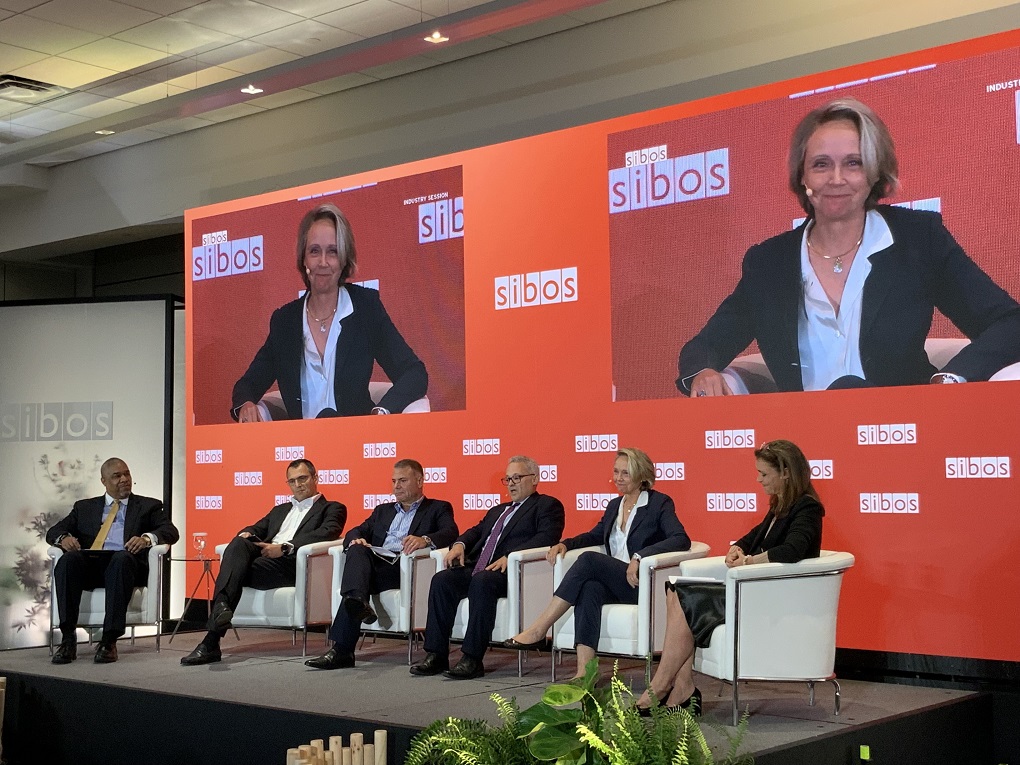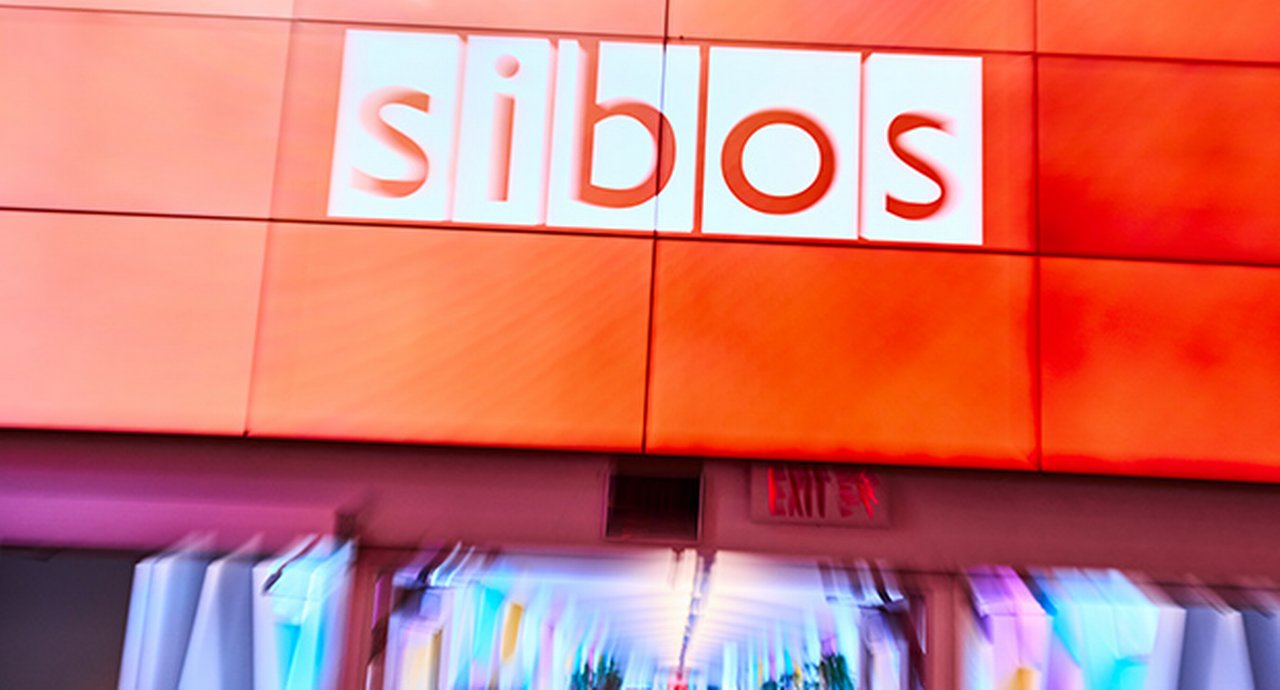19 October 2023
Sibos returned to the Metro Toronto Convention Centre (MTCC) for 2023, with fraud prevention, digitalisation and standardisation high on the trade agenda. In the fourth of our post-Sibos reports, flow’s Clarissa Dann summarises how the conference addressed these core trade themes
MINUTES min read
Despite there being only three dedicated trade finance conference sessions at Sibos Toronto 2023, the trio that did run addressed the burning issues of the moment in cross-border trade: fraud prevention (and responsibility for it), harnessing data and digitalising operations.
In this article, we delve into five key takeaways from the event, shedding light on the challenges and opportunities that are shaping the future of trade finance.
1: Trade finance supply and demand gap widens, shift to open account mechanisms increases
A series of black swan events – ranging from higher interest rates, persistent inflation, the Russia/Ukraine conflict (plus, at the time of writing, renewed instability in the Middle East region) and the legacies of the pandemic – has increased demand for trade finance. They have also made the world a riskier place in which to lend it – except to track record counterparties. This, in turn, has had a significant knock-on effect on the ‘trade finance gap’, which, according to the Asian Development Bank (ADB) research report published just before Sibos, grew to a record US$2.5trn in 2022 – tripling from US$800bn from 2020.1 See Figure 1.
As the ADB puts it, “The trade finance gap is the difference between requests and approvals for financing to support imports and exports. Rebounding strongly after the Covid-19 pandemic, global goods exports grew in 2021 and 2022 at 26.6% and 11.5%, respectively. Demand for trade finance surged on the back of this sharp recovery but heightened economic risks made finance more difficult to secure than before.”
There is no shortage of liquidity in the market, but the main stumbling block remains – the basic mathematics of transaction/onboarding/KYC costs outweighing the likely revenues gained in lending to entities with risk profiles that don’t meet risk management criteria. The ADB survey, which included responses from 137 banks from around 50 countries, also pointed out, “the majority of banks and companies that took part in the survey believe that ESG alignment could potentially help reduce the trade financing gap”.

Figure 1: The global trade finance gap
Sources: ADB. 2023 Trade Finance Gaps, Growth, and Jobs Survey—Banks; and World Trade Organization. WTO Data. https://data.wto.org/ (accessed 19 July 2023).
In the Sibos Conference session, Trade finance fraud: combatting the bad actors, moderator Alexander Malaket, President on Canadian consultancy OPUS Advisory Services International reported, “We have had a very clear shift from traditional trade finance mechanisms to supply chain and open account mechanisms, which is showing some momentum both within banks and non-bank providers”. This was a trend Shirish Wadivkar – Global Head of Wholesale Payments and Trade Strategy at SWIFT confirmed in a GTR interview at Sibos. “While documentary trade is still core, the growth is in open account non-bank intermediated trade, which shows up as payments on Swift. Open account financing messages don’t go over Swift.”2
2) Trade’s complexity, paper-based and cross-border nature makes it vulnerable to fraud
In addition to the perfect storm of a volatile geopolitical and macroeconomic landscape, worries about trade finance-related fraud also contribute to the gap between supply and demand of trade finance. “Fraud, financial crime and compliance-related issues have a direct impact on our ability to collectively provide adequate levels of trade financing and generate the economic benefits that flow from that,” said Malaket.

Pictured: Atul Jain (Deutsche Bank) during the Sibos 2023 panel session, Trade Finance Fraud: combatting the bad actors
Fraud is an ever-present threat to trade, with the industry facing the dual challenge of outdated, document-based processes and increasingly ambitious and sophisticated fraudsters who are intent on exploiting this weakness (the topic is explored in more detail in the flow article, Fighting trade-related fraud). The financial impact is significant, estimating that the cost of realised fraud from business disruptions amounts to around US$5bn annually.3
So how can fraud be addressed in the trade space? The fundamental challenge for trade finance participants is that to ensure security, you need to know who is involved, what is being financed, where the documents and goods are, and what value is involved. This ensures the trade is not unknowingly – or knowingly, in the case of fraud – being over financed; a task less straightforward than it might seem.
“The trade of goods is complex: multiple parties, multiple jurisdictions, multiple banks, are, for the most part, looking at only financing a singular portion across the value chain,” explained Atul Jain, Global Co-Head, Trade Finance & Lending, Deutsche Bank. “And it can be largely opaque to financial institutions how that end-to-end chain looks, making it rife for falsifying documents, altering otherwise valid documents, withholding documents or deleting documents.”
“Technology is not a panacea for the type of two party-led fraud we are seeing. And this puts much of the controls impetus back on human beings”
While technology can certainly play a role in deterring and preventing one-party fraud, the type of fraud that is seeing success is more often than not being orchestrated by multiple parties – e.g. two parties colluding to defraud a third. “Technology is not a panacea for the type of two party-led fraud we are seeing. And this puts much of the controls impetus back on human beings,” added Jain. This is putting the onus on banks to ensure they can maintain experienced, capable people who can see patterns, smell out the risk and curate a deep understanding of clients – all while developing and training the next generation of trade finance professionals.
The panel agreed that more needed to be done to bring new talent into the industry – individuals joining for the long-term so that there is a degree of continuity. “We are getting close to the point where the musical chairs run out,” noted Malaket wryly in reference to experts moving around within the sector.
3) Trade data could tell us so much – if only we could aggregate and analyse

The Sibos conference session, Making the most of data in trade finance. From left to right: Tod Burwell (BAFT); Chris Cox (Citi); Alan Koenigsberg (Visa); David Cooperman (EY); Emanuelle Petelle (Société Générale); and Karine Dudoux (Natixis CIB)
To kick off the session Making the most of data in trade finance at Sibos 2023, the audience was asked to vote on what they believed to be the biggest obstacle to unlocking the value of data in trade and responded as follows:
- Trusting the accuracy of data (41%)
- Automating underlying data (31%)
- Defining data standards (16%)
- Data sharing privacy/security (13%)
The panel, however, did highlight lack of automation as a further significant obstacle. Trade transactions generate a huge amount of data, and it will not be cost effective to take and use all the available information without automation, they agreed.
One key challenge in achieving automation is that the majority of the trade business still relies on paper-based documentation, requiring manual, non-digital processes to be frequently deployed throughout the supply chain. Optical character recognition (OCR) technology, which can convert an image of a trade document into a machine-readable text format, is proving its worth in overcoming some of these challenges but has not yet achieved the ubiquity needed to drive widespread changes.
Another important point was that the use of proprietary solutions to interrogate data is holding back the development of optical character recognition (OCR) models that could be standardised and scaled up by all participants in the ecosystem.
While only 16% of the audience picked it as their top obstacle, the need for greater standards – not just for the use of OCR but more broadly – was also agreed (see also our summary of APIs in trade below). After all, standards are the building blocks and govern how we define contracts, financing, legal entities, risk appetite, ESG parameters etc. Whatever the parameter is, standards help faciliate decisions and eliminate frictions,” said one panelist.
Take anti-money laundering (AML) and know-your-customer (KYC) checks, for example. While every bank in the ecosystem has to perform these – often on the same counterparties – the lack of standards, combined with data privacy and security concerns, means this information is not commonly shared, leading to a significant duplication of effort across the industry. A global data repository for such checks and balances is being explored whereby a neutral network, such as Swift, could serve to manage the data and verify its accuracy …but as is always the case with such initiatives, success is dependent on widespread adoption.
4) APIs and standards are the big connectors – but we all need to move together
The need for standards in trade finance underpinned the third trade finance session, Corporate to Bank APIs for Guarantees – are we future ready?
This was a particularly useful overview of where interoperability has got to. Moderated by Swift’s Global Lead, Trade Strategy Avanee Gokhale, the expert line-up comprised:
- Baptiste Audren (Chief Revenue Officer, Komgo);
- Joon Kim (Global Head of Trade, BNY Mellon);
- Juliette Kennel (Head of Standards, Swift): and
- Samuel Mathew, Global Head, Documentary and FI Trade, Standard Chartered.
Against a backdrop of growing fragmentation, the need for interoperability is more acute than ever. Today, Swift maintains several bank-to-bank and corporate-to-bank messaging systems that allow for the flow of information relating to documentary trade finance transactions: MT 799, MT 760 and MT 798.
Recent years have, however, seen a growing trend towards the use of application programming interfaces (APIs) for exchanging data within the trade ecosystem. Without a recognised API standard, proprietary API models and frameworks managed by banks and fintechs have emerged. While this makes integration with a single provider easier, it serves to create further fragmentation and additional workload for corporates looking to work across multiple providers.
In response to these challenges, Swift, in collaboration with the ICC, has released the first API industry standards for bank guarantees. These align with the existing MT standards, while also ensuring future ISO 20022 compliance.4 “It is very important for the trade industry to have a common language for data exchange between the various ecosystems involved, including banks, corporates, platforms and service providers. These APIs are that common language,” said one panelist.
Another observed, “When you can create efficiency and a degree of automation and scalability, you can do things faster, you can do more, you can facilitate more transactions, which allows you to enhance the client experience. This is where standards come in.”
The next step will be adoption – and the panellists agreed that education among corporates is going to be critical. “Corporates need to know that these APIs exist – and without this education and awareness we are not going to be successful,” said Swift’s Kennel. “Swift definitely has a role to play here: we need to create materials, do some roadshows and try and get the word out there. Banks equally have a role to play in encouraging their corporate clients to adopt the standard. And if we all play our roles, I believe we can get the traction that we need.”
This is not the only Swift initiative to leverage API technology either. As part the ongoing efforts to digitalise trade, Swift, in collaboration with four authorised electronic bills of lading (eBL) providers (Wave, TradeGo, CargoX and Edoxonline) and two banks, including Deutsche Bank, has performed a proof of concept for eBLs using APIs that leverage the Digital Container Shipping Association’s industry specifications. “Swift has a strong foundation of trade data – and more could be done to leverage this to create scalable solutions for the industry,” Deutsche Bank’s Jain told flow afterwards.
“One of the challenges we persistently face is that we do not row in the same direction”
5) The digital trade finance train has left the station….
On 20 September 2023, while experts from across the globe met in Toronto at Sibos to discuss the future of trade finance, an important change was underway in the UK. The Electronic Trade Documents Act, which received royal assent in July, finally took effect, giving digital versions of important trade documents – including bills of lading, bills of exchange and promissory notes, among others– the same legal standing as their physical counterparts.
The impact of the Act extends far beyond the UK, as English law governs 80% of trade documents worldwide.5 “Legal applicability has been the binding constraint for trade digitalisation for several years. This is now, at least in theory, being taken off the table as an excuse,” explained Jain.
Andre Casterman, Chair of the International Trade and Forfaiting Association (ITFA) Fintech Committee, told flow in a follow-up discussion that while digitalising bills of lading is an important step forward in terms of driving efficiencies, the real benefit for banks may come from digitalising bills of exchange and promissory notes. “There is a real opportunity for us to connect these instruments to supply chain finance,” said Casterman. “It is here, in the open account space, where there is likely to be a real growth impact for banks in the short term – and this should help to drive adoption.”
While legal changes bring much potential for trade finance, similar opportunities have come and gone many times in the past. What is different this time? According to Casterman, it is important to consider that previous efforts tried to tackle the more complex conditional payment obligations and create entirely new instruments. This time around, unconditional payment obligations are being tackled using the same instruments but in a digital format.
Again, everything comes back to adoption. “One of the challenges we persistently face is that we do not row in the same direction,” reflected Malaket. “Even when we attempt to do it, there are always players that sign up, get all the right stamps and approvals that need to happen to adopt the new technologies or business models and then they stand on the sidelines and wait for someone else to do it. This time around, we need to tackle it together.”
Sibos 2023 Toronto took place at the Metro Toronto Convention Centre 18–21 September 2022, and the first two sessions featured in this article are available virtually to Sibos registrants on demand



